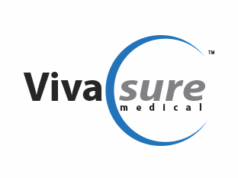There are advantages and disadvantages of being responsible for a newspaper. My son Stephen and I began Vascular News in 1999 and Interventional News shortly afterwards with the support and encouragement of Andy Adam who has remained as an editor ever since alongside Brian Stainken who has just become the President of the Society of Interventional Radiology. It is most rewarding to have an immediate mode of communicating news but there is always a conflict in terms of editorial freedom and interference by the publisher.
Inevitably, I have my personal views as a clinician on some topics. But at the same time a journalist covers a meeting and comes away with a view and it is right that that journalist should write as he or she sees the story. When I go myself to a meeting, I cannot help taking a view on controversial topics. The visit to the recent “Controverses et Actualités en Chirurgie Vasculaire” meeting in Paris presented such an example. I took away from this meeting a view that a key presentation on carotid issues was given by Sumaira Macdonald. I was inclined at once to commission Sumaira, if she would agree to it, to write an article on her talk. It was so balanced and it seemed to me to be very fair. She duly wrote on “Carotid stenting: Does experience matter?”. When I read this well referenced article, I enjoyed it as I had her talk in Paris. It was then published in the Charing Cross edition of Vascular News. I now wish that it had appeared in Interventional News. I decided to write my personal views and offer it this time to Interventional News. It is a bit of a cheek for a vascular surgeon to write in that newspaper, but there is a good reason.
In the last edition of Interventional News, there is an article written by the journalist who covered the event under what I find is a regrettable headline which declared that “CACVS delegates say CAS is dead”. Whilst I accept the freedom of a journalist to write it as they see it, this does not mean that I personally agree with everything they write. Do I agree with this headline? No, I do not. The reason why I dislike this heading so much is because it is so biased without realising it! Controversies is essentially a vascular surgical meeting that is held in high esteem and run by my friend, Jean-Pierre Becquemin. The programme is very balanced and so it is sad that a biased article appeared in the newspaper, particularly as we had commissioned Sumaira’s article.
My view is that it is quite clear that proper training to deploy carotid stents is crucial. Sumaira emphasises that it is not just numbers of cases but the environment of learning and also the length of time being involved with the option of carotid stenting. It is apparent to me that it takes time to be sensitive to the type of anatomy which responds best to carotid stenting. This is all part of the learning process. I am less exercised by the background discipline and it is clear that interventional radiologists, vascular surgeons as well as interventional cardiologists are performing carotid stenting. The companies selling the stents do not shy away from selling to any discipline. Surely the key is that the patient must be safe and the operator well trained. It is also desirable that carotid bailout is always available. Thus it is a great advantage for there to be the availability of recovery of intracranial mishaps at once. Time delay is not good. Also required is the occasional need for carotid surgical bailout although this will be seldom required.
I am impressed by the revolution which has taken place in the management of varicose veins in an office based environment. From this I conclude that carotid stenting will sweep the board against carotid endarterectomy once the referring neurologists and doctors believe that stenting is as safe as the operation. At present, my view is that there is a background uncertainty but this can change at any time.This view is supported by data from the European Vascular and Endovascular Monitor (EVEM) that shows that there is a relentless change towards carotid stenting over time. However, there are clearly many referring doctors who are unsure and continue to refer for surgery. It goes without saying that, as far as I am concerned, an out-patient procedure will be preferred against a slit of the throat no matter how expertly performed. Nevertheless this will not happen until there is reliable evidence that there is at least parity. The results of the CREST trial in the United States and the European International Carotid Stenting Study (ICSS) are anxiously awaited. Such evidence as we have to this point leaves doubt but this is likely to be a temporary position. Therefore my view is that carotid stenting is far from dead. I hope that this makes clear my personal view and at the same time the dilemma that a publisher with knowledge of the field has at times like this.
Roger Greenhalgh, Imperial College, London, UK.













